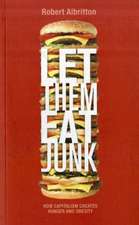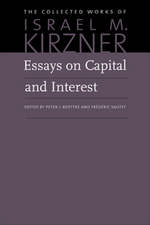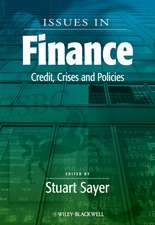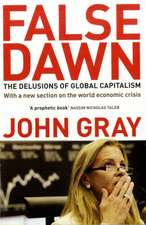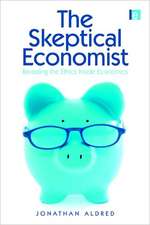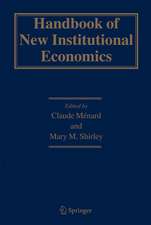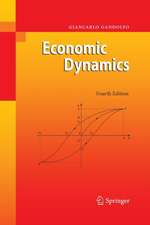Newtonian Microeconomics: A Dynamic Extension to Neoclassical Micro Theory
Autor Matti Estolaen Limba Engleză Hardback – feb 2017
| Toate formatele și edițiile | Preț | Express |
|---|---|---|
| Paperback (1) | 895.45 lei 6-8 săpt. | |
| Springer International Publishing – 3 mai 2018 | 895.45 lei 6-8 săpt. | |
| Hardback (1) | 899.69 lei 6-8 săpt. | |
| Springer International Publishing – feb 2017 | 899.69 lei 6-8 săpt. |
Preț: 899.69 lei
Preț vechi: 1097.19 lei
-18% Nou
Puncte Express: 1350
Preț estimativ în valută:
172.18€ • 186.96$ • 144.63£
172.18€ • 186.96$ • 144.63£
Carte tipărită la comandă
Livrare economică 22 aprilie-06 mai
Preluare comenzi: 021 569.72.76
Specificații
ISBN-13: 9783319468785
ISBN-10: 3319468782
Pagini: 470
Ilustrații: XVIII, 464 p. 97 illus., 52 illus. in color.
Dimensiuni: 148 x 210 x 31 mm
Greutate: 0.69 kg
Ediția:1st ed. 2017
Editura: Springer International Publishing
Colecția Palgrave Macmillan
Locul publicării:Cham, Switzerland
ISBN-10: 3319468782
Pagini: 470
Ilustrații: XVIII, 464 p. 97 illus., 52 illus. in color.
Dimensiuni: 148 x 210 x 31 mm
Greutate: 0.69 kg
Ediția:1st ed. 2017
Editura: Springer International Publishing
Colecția Palgrave Macmillan
Locul publicării:Cham, Switzerland
Cuprins
Chapter 1: Economics as a Science.- Chapter 2: Measuring in Economics.- Chapter 3: Economic Systems.- Chapter 4: Consumer Behaviour.- Chapter 5: The Behavior of Firms.- Chapter 6: Goods' Markets.- Chapter 7: Labor as a Productive Factor.- Chapter 8: Capital Goods as Firms' Input.- Chapter 9: Elasticities and the Market Mechanism.- Chapter 10: Fundamentals of Financial Markets.- Chapter 11: Saving, Borrowing and Interest Rate.- Chapter 12: Mathematical Appendix.
Recenzii
“This book could be interesting for students of undergraduate- and graduate-level university courses in microeconomics, especially those interested in econophysics. The book presents a new methodological bridge between modeling principles in economics and physics.” (Ants Aasma, Mathematical Reviews, July, 2019)
Notă biografică
Matti Estola is Senior Lecturer in Economics at the University of Eastern Finland. His research specialises in methodology, quantitative methods and econophysics. Estola has lectured in microeconomics at elementary, intermediate and advanced levels for over 20 years, and has published numerous articles on economic dynamics.
Textul de pe ultima copertă
Presenting the dynamic laws of economic quantities, this book tackles one of the core difficulties of current economic theory: that of transforming abstract equations of equilibrium into precise dynamic rules. The theoretical framework of neoclassical micro theory has historically prohibited its development into a quantitative science. Estola identifies the main weaknesses of this framework as follows: 1) Static optimization does not allow for the modelling of time-dependent production and consumption flows; 2) The assumption of optimal behaviours forecloses any understanding of changes in economic quantities, as none will change its optimal behaviour. The author of this title assumes that economic units tend to better their situation where possible. The book demonstrates how this approach leads to an analogous framework in economics to the Newtonian framework in physics. The ‘forces’ acting upon economic quantities are defined that either cause adjustment toward an equilibrium state or keep the system in motion with time. In this way, the neoclassical framework corresponds to a ‘zero-force’ situation. Introducing a system of measurement units for economic phenomena, Estola applies this throughout, and thereby illuminates a way for microeconomics to meet the minimum requirements of quantitative analysis.
Caracteristici
Defines economic forces acting upon economic quantities Defines and applies a system of measurement units for economics Compares results of every presented theory with observed economic behaviour Provides a deep level of understanding for empirical testing of economic theories







